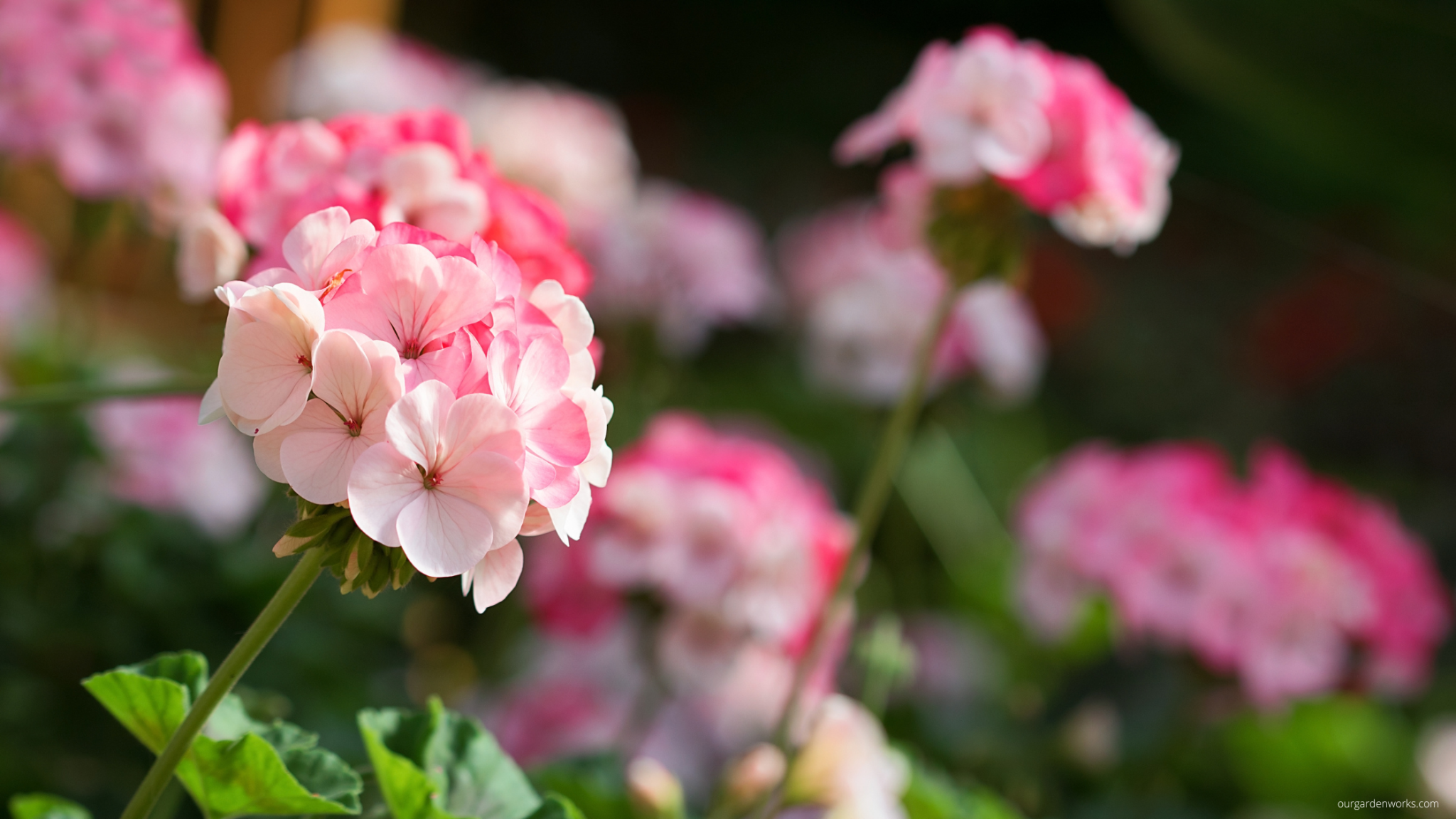Geraniums are among the most generous flowering plants during the growing season. They are easy to grow and maintain in the garden.
Learning how to deadhead geraniums can help amplify their bloom power and maintain the beauty of your landscape for a long time.
Most gardeners don’t mind pruning, deadheading, and fertilizing geraniums since they are very low maintenance. However, with extra effort, they’ll be tidier to look at and have better-quality blooms.
So, if you want to be a little bit extra in taking care of your geraniums, check out the specific benefits of deadheading geraniums.
The benefits of deadheading geraniums
Deadheading is the process of removing spent or wilting flowers from a plant. At a glance, it may look like it’s cleaning up the plant. However, it has beneficial systemic benefits for geraniums:
Repeat-bloom
Geraniums are the kind of plants that replace the spent blooms once they fall off. It is the reason why some people don’t even bother to remove the spent flowers since they will just naturally pop out on their own.
However, deadheading helps preserve the energy of the geranium. Plants can clean themselves on their own but it takes them so much time and energy to do so since they don’t have hands as we do.
You’ll notice them cleaning themselves when dried leaves and flowers fall on their own. Through deadheading and pruning, the plant saves so much time and energy.
So, deadheading geraniums allows them to redirect their energy on bloom production and keeping themselves alive and healthy
Promotes stem growth
When geraniums are deadheaded, they have more energy to develop more shoots. As with all new growths, that means your geranium will stay alive and bloom longer than it used to.
Prevent the development of seeds
Plants are programmed to develop seeds after flowering. It is their natural process that involves pouring all their energy into developing seeds and abandoning the bloom development.
Simply put, when you let the flowers seed, the geranium will eventually stop developing blooms.
Prolong the life of plants
Since more energy is saved by the plant through pruning and deadheading, they will be able to fight off environmental stress better and keep blooming until the late weeks of the growing season.
How to deadhead geraniums: Step-by-step process
Deadheading geraniums is as easy as pruning. You can use your hand or use a handy dandy pruning shear. If you want to avoid causing any injury to the plant, it’s best to use pruning shears.
Injuries on the stem can weaken the plant and open a gateway for fungal diseases and pests.
So, if you are not confident in snapping off the stems better use a scissor or any garden tool that can make a clean cut. Now, check out how to deadhead geraniums below:
Step #1: Check for wilting and drying flowers
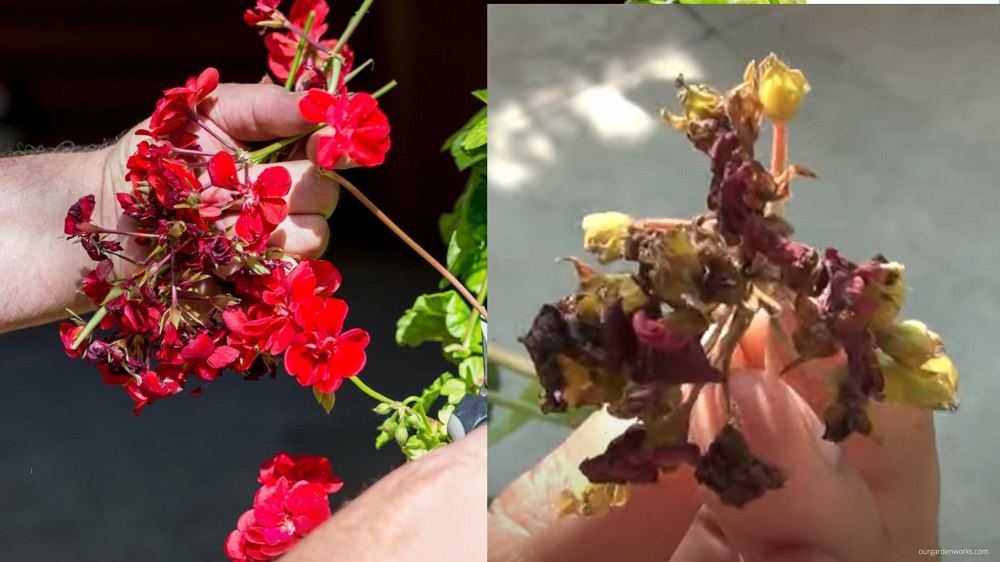
Most people think that you have to wait for them to dry out to deadhead them. However, you can remove them as early as you see them starting to shrink even if they still retain their bright colors.
Some gardeners think it’s a waste to remove them but the plant will sprout new flowers again so it’s not a waste.
Step #2: Locate the end of the stem that holds the flowers
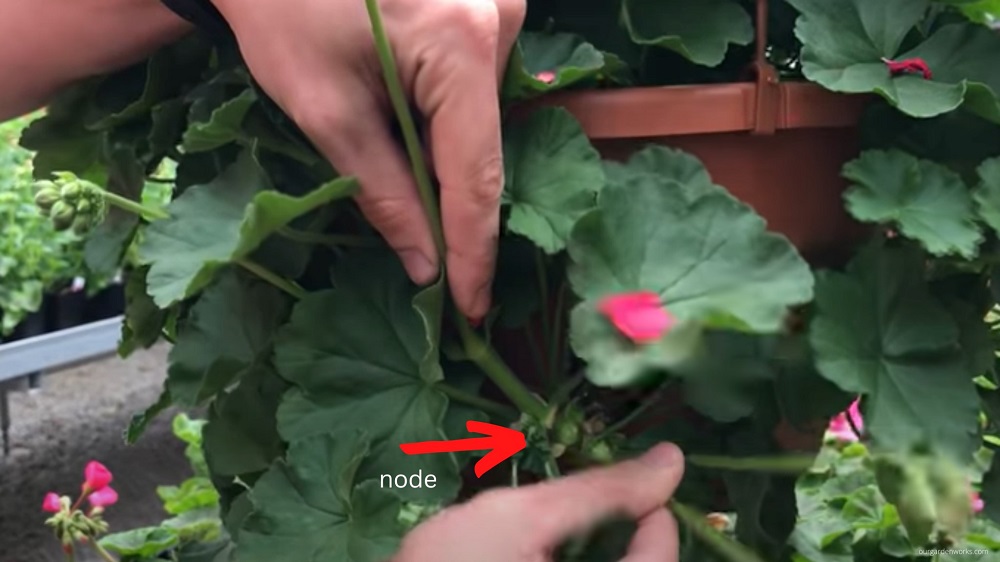
Geranium flowers grow from a spike that branches out from the stem. The spike grows from a node in the stem where you should cut off the flower.
Once the flower is removed, the new growth will replace it and become a new flower.
Step #3: Cut or snap the flowers
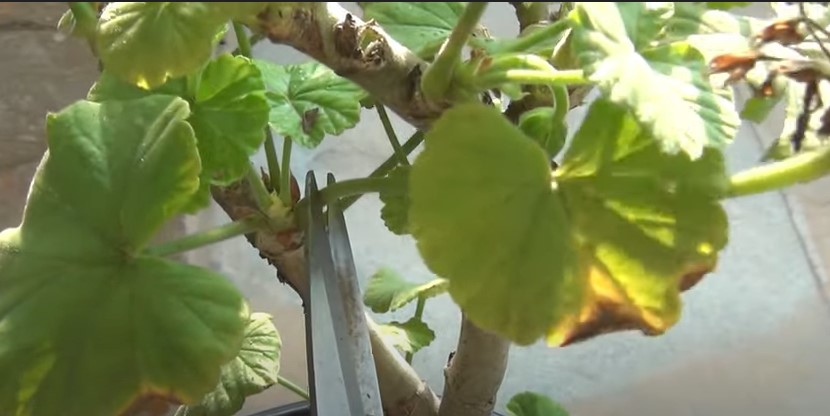
Cut or snap the flowers not below the flowers but at the node where it is attached to the main stem.
To gain more control of the stem, hold the flower spike right where it meets the stem to easily snap it off. You’ll know that a geranium plant is healthy when you can easily snap the stem off. Otherwise, it is possibly dehydrated and needs more watering.
When to stop deadheading geraniums
You should stop deadheading geraniums during the last weeks of their growing season.
Geraniums are loved for their long-lasting blooming season that starts from spring to fall. Enjoy the full growing season with blooms and deadhead your geraniums from spring to mid-fall.
Two weeks before the first frost, leave the last blooms on the plant until they dry out because they are the last blooms that the geranium will produce for the season.
Geranium care: Tips for growing geraniums
Geraniums are very low maintenance but they still need a bit of care from time to time. They can also experience stress and may fail to bloom a couple of times throughout their lifespan.
So, here are some tips on how you can take care of your geraniums:
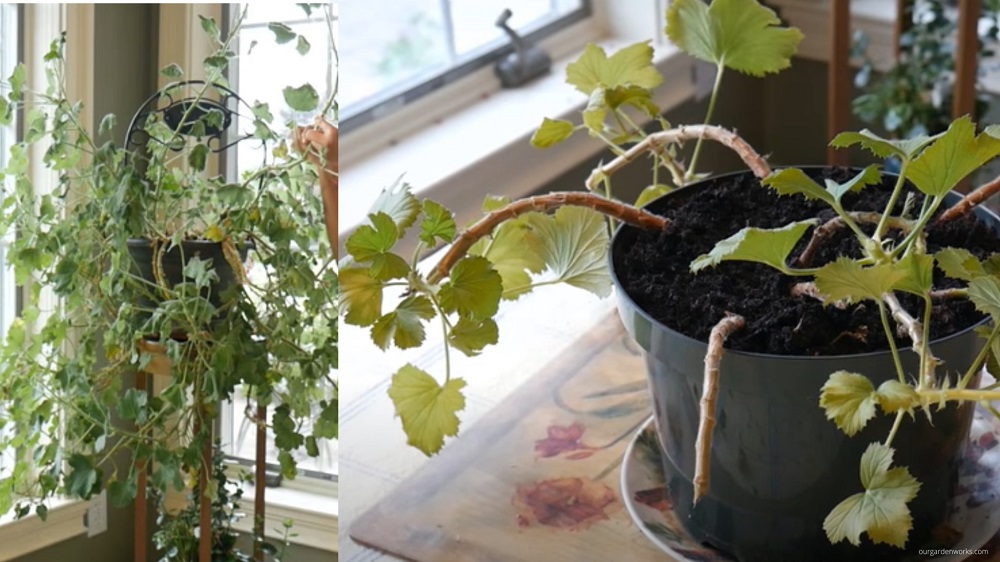
Pruning
Pruning perennial geraniums helps the plant maintain its vigorous stems and prevent it from being too leggy in spring.
The best time to prune them is right after they stop blooming in the fall. It’s best to do a hard pruning of no more than one-third of the stems for better growth in the next growing season.
Fertilizing and Watering
Geraniums are drought-tolerant plants. Their roots easily rot in water so make sure that you let the soil dry completely before watering them again. In most cases, the occasional rainfall can be enough for geraniums.
Geraniums are heavy feeders during bud development. The best fertilizers for geraniums are high in phosphorus and micronutrients like magnesium. If you’re not a fan of synthetic fertilizers, you may use compost or compost tea.
Avoid using aged manure since it contains high nitrogen content, forcing your geraniums to develop more leaves than flowers.
Liquid seaweed is an ideal alternative since it is high in various nutrients that geraniums need to sustain their blooms.
Nutrient deficiencies of geraniums you should watch out for
Geraniums rarely get sick and droopy but when they do, the signs are very evident.
Here are the nutrient deficiencies common in geraniums and their respective impact on the health of the plant.
- Nitrogen deficiency: slow growth, yellowing of leaves, stunting.
- Phosphorus deficiency: dark green leaves, stunting, leaves become reddish to purple.
- Potassium deficiency: the death of lower leaves and weak stems.
Pest and fungal disease control
According to Iowa State University, the common pests in geraniums are aphids, cabbage loopers, and slugs.
The key to keeping geraniums safe from these pests is proper identification so you can use the appropriate pesticide to use. Aphids, for example, can be dealt with by wiping the leaves with soapy water.
Geraniums are rarely subject to fungal diseases but they can also be affected by some types of pathogens, such as:
- Bacterial leaf spot.
- Botrytis leaf spot.
- Rust.
- Root rot.
The fungal diseases above usually occur in wet conditions and lack of enough ventilation. This is the reason why frequent pruning and deadheading of geraniums is an essential part of plant maintenance.
If the pot is too crowded, excess moisture can accumulate or soak the leaves which will attract fungal disease pathogens.
Frequently Asked Questions (FAQs)
Do geraniums grow all year round?
Geraniums can grow all year round indoors. However, they need the cool temperatures of spring for bud development. In outdoor plant beds, perennial geraniums will die back every winter and grow again next spring.
The average lifespan of geraniums can last for two or more years. As with most flowering plants, the older they get, the more they become woody and produce fewer flowers over time.
So, you may enjoy the geranium blooms for a couple of years but at some point, you’ll need to propagate new plants from the old geranium to maintain plenty of blooms.
The geranium varieties that are ideal to grow all year round indoors according to Mother Earth Living are as follows:
- Rose geraniums
- Old-fashioned rose geraniums.
- Peppermint rose geranium.
- Skeleton rose geranium.
- Fruit geraniums
- Mabel Gray geranium.
- Prince Rupert geranium.
- Apricot geranium.
- Spice geranium
- Cinnamon geranium.
- Nutmeg geranium.
- Mint geranium
- Pungent peppermint geranium.
- Pine geranium
- Fern leaf geranium.
- Staghorn geranium.
- Dean’s Delight geranium
- Pungent geraniums
- Clorinda geranium.
- Mrs. Kingsley geranium.
- Old Scarlet geranium.
- Scarlet Unique geranium.
What time of year is best for geraniums?
Geraniums grow well from spring to fall. They are frost sensitive so make sure to wait for the threat of frost to subside before placing them outdoors.
What month do you cut back geraniums?
Cut back or hard prune geraniums as soon as they stop developing blooms. Doing so will help the plant save energy and prepare for winter. Pruned geraniums grow and bloom better next spring.
Why are the leaves on my geraniums turning yellow?
Yellowing leaves of geraniums may indicate nitrogen deficiency or fungal disease. Before applying fertilizers or pesticides, use a soil pH meter to ensure that the soil acidity is right for the geranium which is between 6.0 to 6.5.
If the soil is too acidic, you may apply lime but if it’s too alkaline, you may apply sulfur.
Do geraniums prefer sun or shade?
Geraniums thrive in full sun from 4 to 6 hours. However, some geranium varieties like ivy geranium prefer light shade. When grown indoors, place them next to windows where they can bask in the sunlight.
Will geraniums come back every year?
Perennial geraniums will grow back again in spring after their dormancy during winter.
However, if grown indoors, they can grow all year long with adequate sunlight and water. In spring, they need the cool temperatures of spring to develop buds.
Are geraniums better in pots or on the ground?
Geraniums have roots that love to be slightly root-bound like spider plants. They make the best plant to grow in flower beds and hanging baskets on patios and edges of pathways.
How long do potted geraniums last?
Geranium can last with its optimal blooming capacity within two years. They can last for a few more years but they will start to become too woody and produce fewer blooms.
Make sure to use some cuttings from the mother geranium plant during its life. Grow new plants from the cuttings that will replace the old one once it stops blooming flowers.
Final Thoughts
We hope that this post helped you learn how to deadhead geraniums properly. It is an easy task that only takes a couple of seconds but immensely helps the geranium to produce quality blooms.
Aside from deadheading, pruning is also crucial for good spring growth.
Let us know in the comments about your experience in growing geraniums. Also, please don’t forget to share this simple guide with your friends and help them maintain the vigor and beauty of their geraniums.
